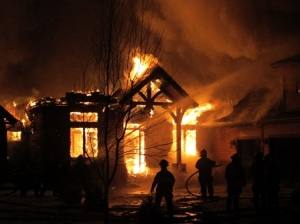Information gleaned from www. baaqmd.gov
Sole source of heat:
A wood-burning device may be used during a mandatory burn ban if the device is the only source of heat in a residential dwelling and the device is EPA certified. A person claiming
this exemption is required to register the EPA certified device in the District’s registration program and submit records to the District for verification.
(Effective November 1, 2016)
Non-Functional, Permanently Installed Heating Device:
Residential dwellings (excluding commercial and residential rental properties) that have a non-functional, permanently installed heating device may receive a temporary exemption from a mandatory burn ban if repairs are completed in 30 days and submission of all repair documentation is submitted to the District within 10 days of completion.
(Effective November 1, 2015)
Loss of Electric Power and/or Natural Gas:
The use of a wood-burning device is allowed during a mandatory burn ban when there is loss of electric power and/or natural gas as determined by the utility service providers.
(Effective November 1, 2015)
Mandatory Burn Ban:
A mandatory burn ban is declared to prevent regional wood smoke accumulation when a PM2.5 level is anticipated to exceed an unhealthy level within the next 3 days.
Update to the above:
A mandatory burn ban is declared when a negative impact upon public health is anticipated resulting from PM2.4 levels forecast to exceed 35 mg/m3. “Mandatory Burn Ban” will replace “curtailment period.” (name change)
Staff determined that Rule 6-3 already allows the District flexibility to declare Winter Spare the Air Alerts 2 – 3 day sooner to prevent unhealthy air from occurring and it is not necessary to amend the regulatory requirements of this section.
Sales and Manufacturing of Wood Heaters:
All new EPA certified wood-burning devices manufactured and sold must meet or exceed new NSPS standards:
• Effective 60 days after new NSPS standards are published in the Federal Register:
o 4.5g/hr for catalytic and non-catalytic stoves using crib test or cordwood test. If cordwood testing is conducted, the manufacturer must supply the emissions test method to EPA and the test method must be approved.
o Effective 5 years after the date of the final rule, the following new NSPS standards apply:
2.0 g/hr for catalytic and non-catalytic stoves using crib test.
2.5 g/hr for catalytic and non-catalytic stoves using cordwood test. The manufacturer must supply the emissions test method to EPA and the test method must be approved.
Wood stove retailers will be allowed to sell existing inventory of EPA certified devices rated 4.6 g/hr – 7/5 g/hr until December 31, 2015.
Sale or Transfer of Real Property has been changed to Disclosure Requirements for Real Property:
Real estate property may not be sold or transferred if it includes an uncertified wood-burning device. The seller may decommission the uncertified device or may replace it with gas-fueled, electric, or EPA Certified devices that meet or exceed new NSPS standards.
(Effective November 1, 2016)
Update to the above:
Removed Proposed “Point-of-Sale” Requirement
The “point-of-sale” requirement has been changed to require disclosure documents upon sale or rental of real property to disclose health hazards of PM2.5
(Effective November 1, 2015)
Fireplace or Chimney Remodels:
Upon remodeling a fireplace or chimney, an uncertified wood-burning device must be replaced with a device that is gas-fueled, electric or EPA certified that meets or exceeds new NSPS standards. This requirement is triggered by any fireplace or chimney remodeling activity that requires a local building permit.
(Effective November 1, 2015)
Update to the above:
Upon remodeling a fireplace or chimney, an uncertified wood-burning device must be replaced with a device that is gas-fueled, electric or EPA certified if the remodel cost exceeds $15,000 and requires a local building permit.
(Effective November 1, 2016)
Commercial and Residential Rental Property has been changed to Rental Properties with Natural Gas Service:
All commercial and residential rental properties must have an alternate form of heat that does not burn solid fuel and all wood-burning devices must be EPA certified or be replace with gas-fueled or electric devices.
(Effective November 1, 2016)
Update to the above:
Removed proposed requirement that all rental properties must replace wood-burning devices with gas-fueled, electric or EPA certified devices.
All rental property in areas with natural gas service must have an alternate from of heat that does not burn sold fuel.
(Effective November 1, 2018)
New Building Constructions:
New building constructions may only install gas-fueled or electric devices. Installation of devices that burn solid fuel is prohibited.
(Effective November 1, 2015)
Update to the above:
Only the date has been changed.
(Effective November 1, 2016)
Visible Emissions Limitation:
Following a 20 minute start-up allowance for new fires, visible emission of grater than 20% opacity and aggregate to 3 minutes in any hour is considered an exceedance of the standard.
(Effective November 1, 2015)
Registration:
Registration – All residential properties claiming Only Source of Heat Exemption must have a registered EPA certified device.
o Type of Device(s)
o # of Device(s)
o Make, Model and Serial # of Device(s)
o Manufacture Date(s)
(Effective November 1, 2016)





